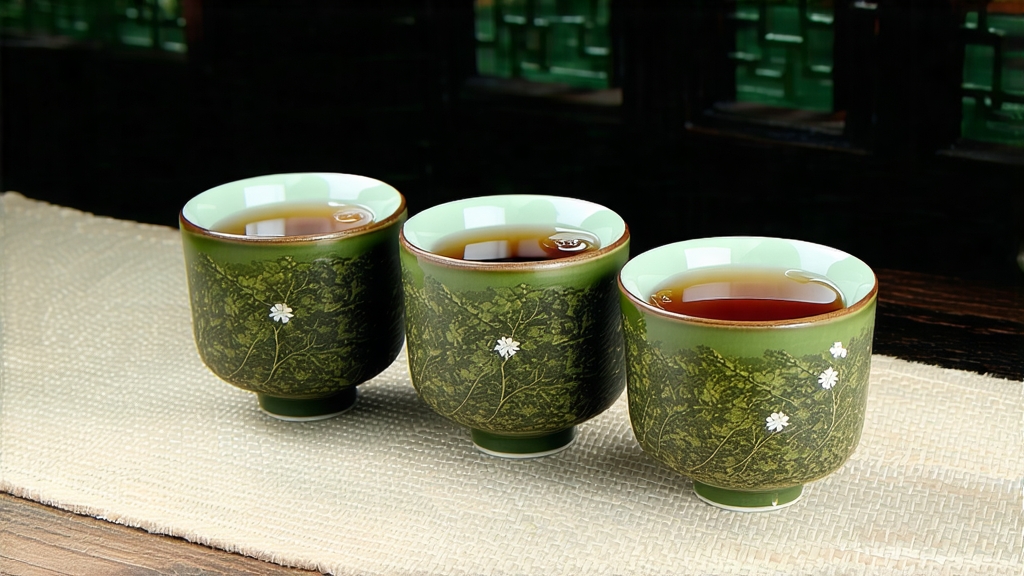
Tie Guan Yin, literally “Iron Goddess of Mercy,” is more than a tea; it is a cultural bridge that carries 300 years of Anxi County’s mountain breath into a single cup. Born in the granite-studded hills of southern Fujian, this oolong has traveled from hidden temple altars to Michelin-starred tearooms, yet it still insists on being leaf, water, and moment. To understand it is to witness a dialogue between soil and soul.
The origin story is told in two parallel tongues. Folk memory speaks of a poor farmer named Wei Yin who, every dawn, swept the courtyard of a neglected Guanyin shrine. One night the Bodhisattva appeared in a dream, pointing to a cave behind the temple. There he found a single tea shoot shimmering like jade. He planted it in his field, and the tea that sprouted carried the lingering sweetness of mercy itself. Botanists tell a quieter tale: a unique strain of Camellia sinensis var. sinensis, later named “Tie Guan Yin,” emerged around 1725 in Yaoyang Village, its thick cell walls and high amino-acid ratio perfect for the half-fermented art. Both stories agree on one detail—the leaf refused to grow anywhere but the iron-red laterite of Anxi’s 800-meter slopes.
Anxi County now nurtures twenty micro-climatic sub-varieties, but three reign abroad. “Original Red Heart” (hongxin weizhong) keeps the oldest genetics, mossy and deep-throated. “Green Heart” (lvxin) offers a brighter, orchid-forward cup favored in Japan. “White Heart” (baixin), a 1960s selection, trades fragrance for stamina, yielding six infusions without surrender. Each is further shaped by five finishing styles. Traditional “Strong Roast” (nong xiang) is charcoal-baked for thirty-six hours, developing cocoa-shell notes that comfort like winter hearth smoke. Modern “Light Aroma” (qing xiang) is dried at 70 °C for twenty minutes, preserving a neon-green leaf that tastes of fresh lychee and spring rain. Between them lie “Moderate Roast,” “Creamy Style,” and the rare “Wild Cliff,” picked from feral bushes clinging to granite crevices, their roots wrapped in orchid mycorrhiza.
Crafting Tie Guan Yin is a 24-hour choreography of stress and rest. Picking begins at 9 a.m. when the sun has burned off dew but before the leaf temperature exceeds 25 °C. Two leaves and a bud are snapped with the nail, never the fingerpad, to keep cells intact. They are carried in bamboo trays so shallow that no leaf is crushed under its own weight. Wilting happens twice: first outdoors for twenty minutes, turning the leaf edges coral-red as enzymes wake, then indoors on reed racks where 200-year-old limestone walls exhale cool moisture. The critical “shaking” (yaoqing) follows: trays are tossed shoulder-high, letting leaves crash and bruise just enough to fracture cell walls along the midrib. Masters listen for a rustle like silk fans; too loud means laceration, too soft means under-oxidation. After four rounds, the leaf emits a perfume of ripe peach and iron, the sign to arrest oxidation at 30–40 %. A brief 260 °C tumble-kill locks the hue, then rolling alternates between mechanical pressing and hand-balling—fists corkscrewing 200 grams at a time until tight pellets rattle like birdshot. The final charcoal bake is paced in three descents: 120 °C for two hours, 90 °C for six, 60 °C for twelve, each gap allowing the leaf to exhale trapped steam so the roast penetrates without masking the cultivar’s innate orchid note.
To brew Tie Guan Yin is to curate a miniature mountain. Begin with spring water whose TDS hovers near 50 ppm; anything harder dulls the metallic snap that gives the tea its name. Pre-heat a 120 ml porcelain gaiwan until too hot to hold; this seals the glaze so aroma cannot hide. Fill one-fifth of the vessel with dry leaf—about 7 grams of the tightly hemisphered pellets. The first pour, 95 °C water for one second, is merely an awakening rinse; watch the orbs unfurl like miniature green suns.